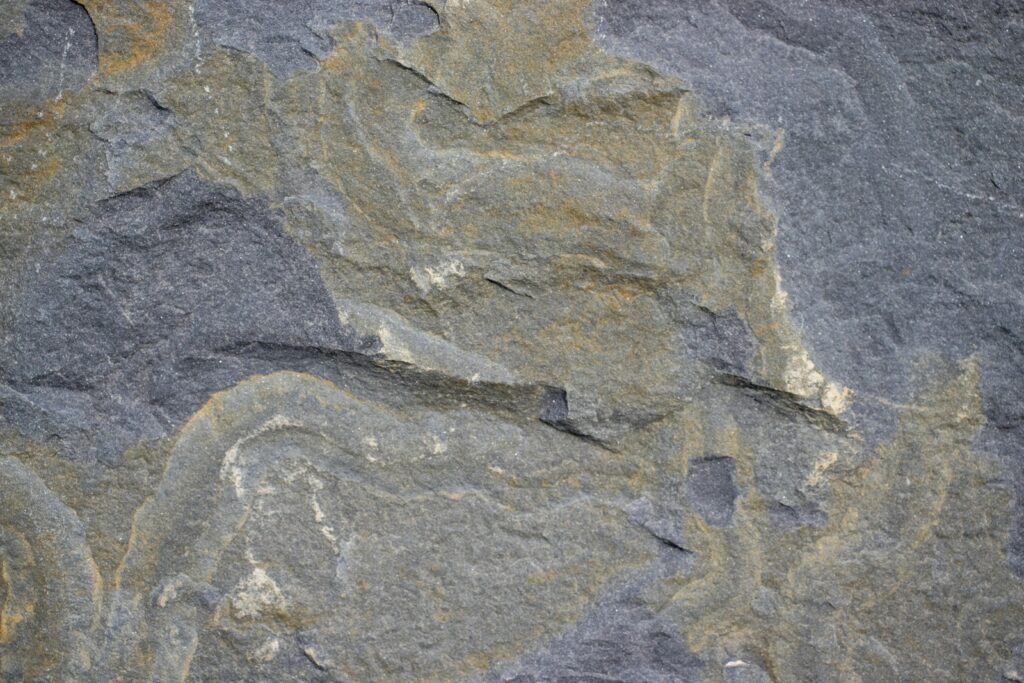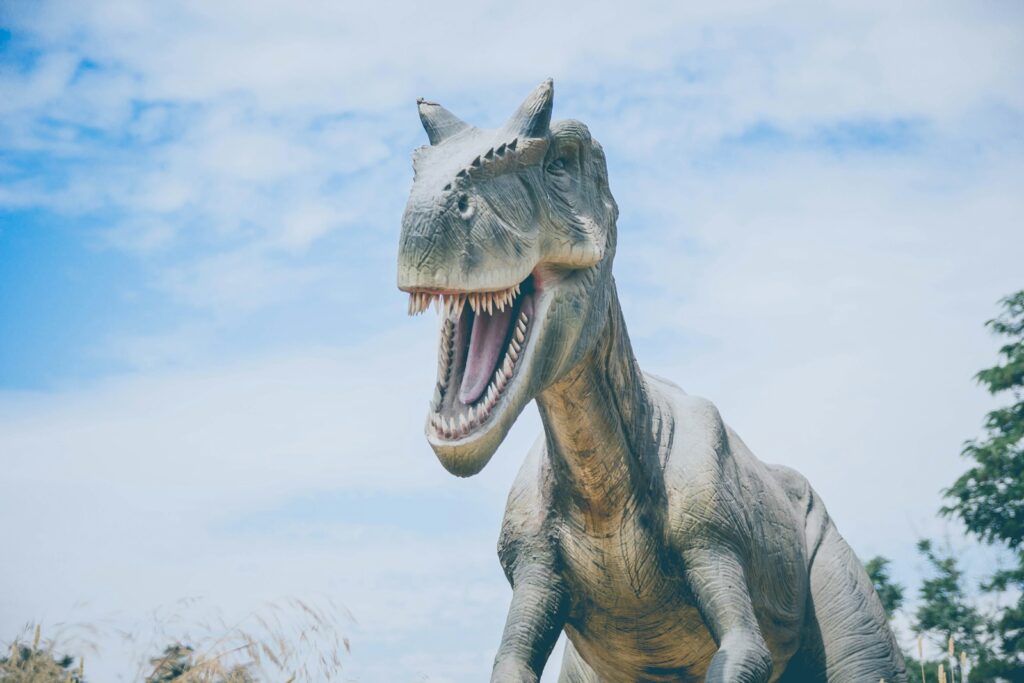While most dinosaur fossils consist only of mineralized bones, occasionally paleontologists discover specimens with preserved soft tissues, skin impressions, or even intact internal structures. These exceptional fossils offer unprecedented insights into dinosaur anatomy, coloration, and behavior that skeletal remains alone cannot provide. The following eight examples represent some of the most remarkably preserved dinosaur specimens ever found, each offering a unique window into the prehistoric world and revolutionizing our understanding of these ancient creatures.
Nodosaur Mummy (Borealopelta markmitchelli)

Discovered in 2011 at the Suncor Millennium Mine in Alberta, Canada, this 110-million-year-old nodosaur represents perhaps the most spectacularly preserved dinosaur ever found. Unlike most fossils that preserve only bones, this specimen retained its armor plating, skin, and even some internal organs in three-dimensional form. The preservation is so exceptional that researchers could analyze the pigmentation in its skin, revealing a reddish-brown coloration that likely helped it camouflage in its forest environment. Scientists believe this 3,000-pound herbivore died in a river, was swept out to sea, and sank to the ocean floor, where fine sediments quickly entombed it, protecting it from decomposition and scavengers. The lack of distortion in the body suggests the carcass exploded upon reaching the seafloor, releasing gases that might otherwise have distorted the remains.
Dakota the Hadrosaur (Edmontosaurus)

In 1999, high school student Tyler Lyson discovered an exceptional hadrosaur specimen nicknamed “Dakota” on his family’s property in North Dakota. This 67-million-year-old duck-billed dinosaur is extraordinarily well-preserved, with large patches of fossilized skin and tendons still intact. Using advanced imaging technology, scientists have been able to determine that this hadrosaur had more powerful legs and was substantially more muscular than previously thought, forcing a reconsideration of how fast these dinosaurs could move. The skin impressions reveal a complex pattern of scales varying in size across different parts of the body, with larger scales along the tail and smaller ones on the limbs. Dakota’s exceptional preservation resulted from rapid burial and mineralization that occurred before significant decomposition could take place, essentially creating a natural body cast of the animal.
Feathered Microraptor (Microraptor GUI)
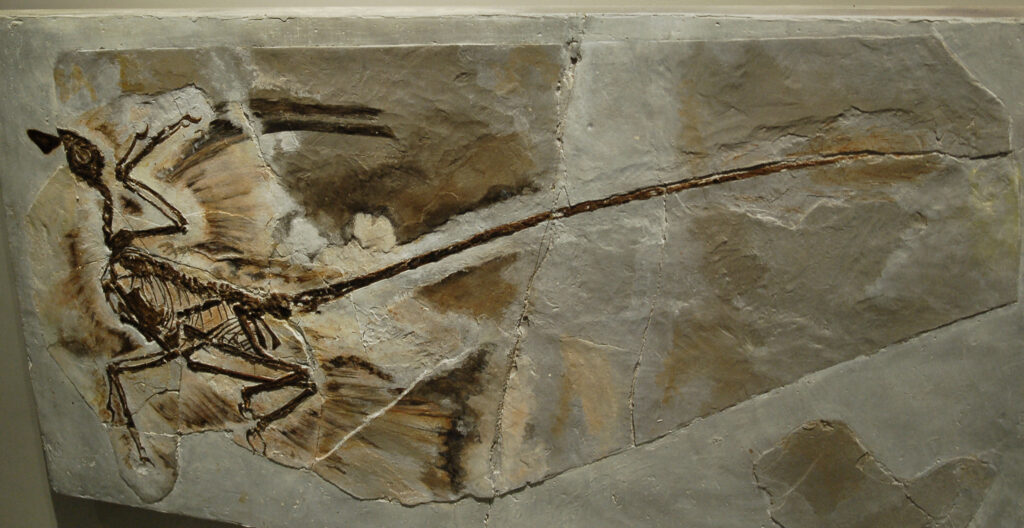
Discovered in the Liaoning Province of China, Microraptor gui represents one of the most complete feathered dinosaur specimens ever found. This crow-sized dromaeosaur lived approximately 120 million years ago and shows clear evidence of feathers on all four limbs, creating what scientists refer to as a “four-winged” configuration. The preservation is so remarkable that researchers could determine the feathers were iridescent black, similar to modern crows and ravens. This exceptional specimen has been crucial in understanding the evolutionary link between dinosaurs and birds. The fine-grained lake sediments of the Jehol Biota in China allowed for incredible preservation of soft tissues that would have decomposed quickly under other conditions. Multiple Microraptor specimens have been found, but the holotype specimen shows particularly well-preserved feather impressions that revolutionized our understanding of dinosaur plumage.
Leonardo the Brachylophosaurus

Named after graffiti found near the excavation site reading “Leonard Webb loves Geneva Jordan,” this juvenile Brachylophosaurus canadensis is one of the most complete dinosaur mummies ever discovered. Unearthed in Montana in 2000, Leonardo dates back approximately 77 million years and retains about 90% of its skin covering, along with evidence of its last meal still preserved in its stomach. Analysis of the stomach contents revealed that Leonardo’s final meals consisted of ferns, conifers, and flowering plants, providing direct evidence of the hadrosaur’s diet rather than just inferences from tooth morphology. The skin impressions show a complex pattern of tubercles and scales that vary across different body regions. Scientists believe this exceptional preservation occurred when Leonardo died near a river and was quickly buried by sediment during a flood event, preventing scavengers from disturbing the remains.
Scipionyx with Preserved Internal Organs
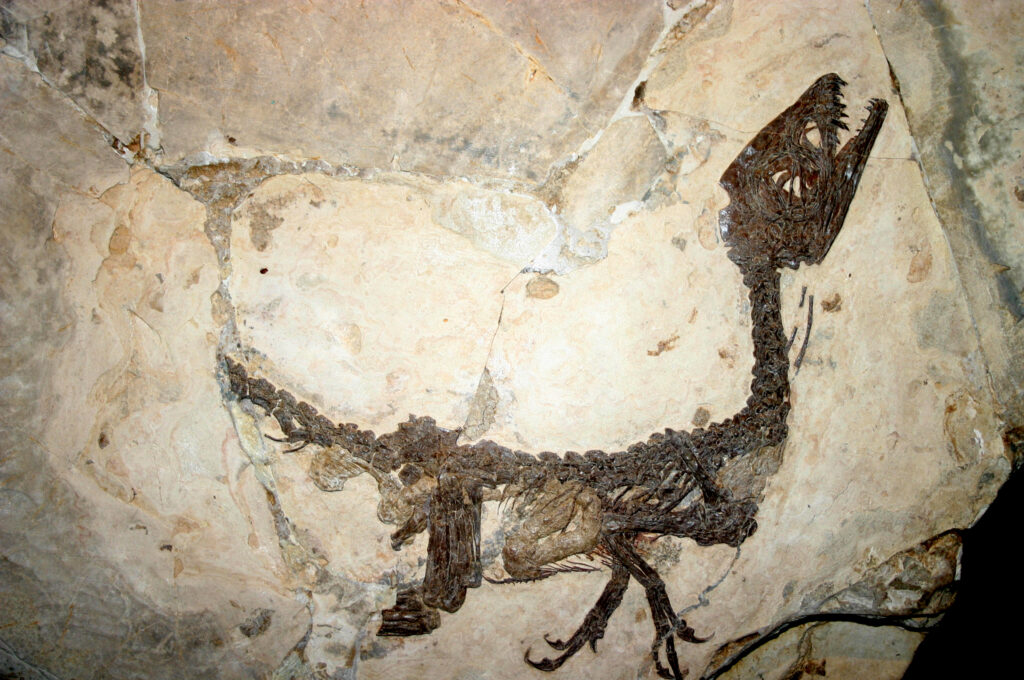
Discovered in 1993 near Pietraroja, Italy, Scipionyx samniticus represents one of the most remarkable examples of internal organ preservation in the fossil record. This small theropod dinosaur, merely the size of a chicken and only a few weeks old when it died, shows traces of muscles, intestines, liver, and even trachea still visible in the fossil. The preservation is so exceptional that scientists could observe the attachment points of muscles to bones, providing unprecedented insight into dinosaur musculature and function. Researchers believe this extraordinary preservation occurred because the dinosaur was quickly buried in fine-grained, oxygen-poor limestone sediments in what was once a lagoon environment. The specimen has been nicknamed “Scipio” and has provided valuable information about the internal anatomy of dinosaurs that had previously been impossible to study directly.
Psittacosaurus with Preserved Cloaca
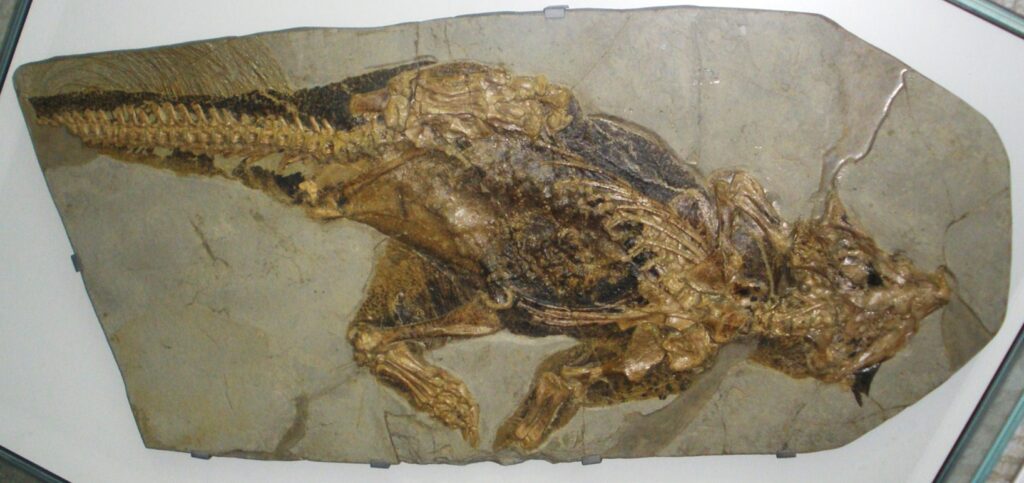
A remarkably preserved specimen of Psittacosaurus, a small ceratopsian dinosaur from the Early Cretaceous of China, has provided scientists with the first-ever look at a dinosaur’s cloaca—the all-purpose opening used for defecation, urination, and reproduction. This specimen, approximately 120 million years old, preserves not only skin impressions but the actual structure of the cloaca, allowing comparative studies with modern reptiles and birds. The preservation extends to pigmentation patterns across the body, revealing that this dinosaur had countershading—darker on top and lighter underneath—a common form of camouflage in modern animals. Scientists have also identified the presence of small, bristle-like structures along the tail that may have served a display or sensory function. The exceptional preservation resulted from the fine-grained lake sediments that entombed the dinosaur shortly after death in the oxygen-poor environment.
Tyrannosaurus Rex “Trix” with Skin Impressions

While not as completely preserved as some specimens on this list, the T. rex nicknamed “Trix”, discovered in Montana in 2013, features remarkable skin impressions that have expanded our understanding of tyrannosaur skin texture. These impressions reveal that T. rex had small, pebbly scales rather than the larger scutes often depicted in earlier reconstructions. The specimen is approximately 67 million years old and represents one of the most complete T. rex skeletons ever found, with about 80% of its bones recovered. The skin impressions were preserved as natural molds in the surrounding sediment, allowing paleontologists to create casts that reveal the texture in detail. This exceptional find challenges previous artistic interpretations of tyrannosaur skin and provides direct evidence of the external covering of these apex predators. Trix is now housed at the Naturalis Biodiversity Center in the Netherlands, where it continues to provide valuable research opportunities.
Zhenyuanlong with Complete Feather Impressions

Discovered in China’s Liaoning Province, Zhenyuanlong suni represents one of the largest dinosaurs with clear, intact feather impressions across its entire body. This dromaeosaur, a close relative of Velociraptor, lived approximately 125 million years ago and grew to about 6.5 feet in length. The preservation is so exceptional that researchers could observe complex wing feathers, including primaries, secondaries, and cover, arranged similarly to modern birdseven this dinosaur could not fly. The tail features long feathers forming a fan-like structure that may have been used for display. The fine-grained lake sediments of the Yixian Formation captured even the most delicate structures of the feathers, preserving them in remarkable detail. This specimen has been crucial in understanding the evolution and function of feathers in non-avian dinosaurs, showing that complex feather arrangements evolved before flight capability.
The Preservation Process Behind These Remarkable Fossils

The exceptional preservation of these dinosaur specimens results from a process paleontologists call “exceptional preservation” or “conservation lagerstätten.” This requires a perfect storm of conditions immediately following death: rapid burial to protect from scavengers, an oxygen-poor environment to slow bacterial decomposition, and fine-grained sediments capable of capturing minute details. In many cases, minerals quickly infiltrate tissues, essentially turning soft parts to stone before they can fully decompose. The chemical environment plays a crucial role, with acidic or alkaline conditions influencing which tissues preserve and which degrade. Water chemistry, particularly the presence of certain minerals like pyrite or phosphate, can enhance soft tissue preservation by replacing original biological materials with more stable mineral compounds. These exceptional fossilization conditions occur rarely in nature, which explains why such well-preserved specimens represent just a tiny fraction of all dinosaur fossils discovered.
How Modern Technology Enhances Our Study of Well-Preserved Specimens

Advances in imaging technology have revolutionized how scientists study these exceptional fossils without damaging them through traditional preparation methods. CT scanning allows researchers to see internal structures without physically cutting into specimens, creating detailed three-dimensional models of soft tissues preserved inside rock matrices. Synchrotron radiation, which produces extremely bright X-rays, can reveal chemical compositions of fossilized tissues, helping identify original organic compounds still present after millions of years. Laser-stimulated fluorescence imaging makes otherwise invisible soft tissue structures visible under specific light conditions, revealing feather structures or skin patterns not apparent to the naked eye. Scanning electron microscopy allows scientists to examine fossil surfaces at microscopic levels, detecting cellular structures or pigment-containing organelles called melanosomes that indicate original coloration. These non-destructive techniques have opened new research avenues that were impossible just a few decades ago.
What Exceptional Fossils Tell Us About Dinosaur Biology
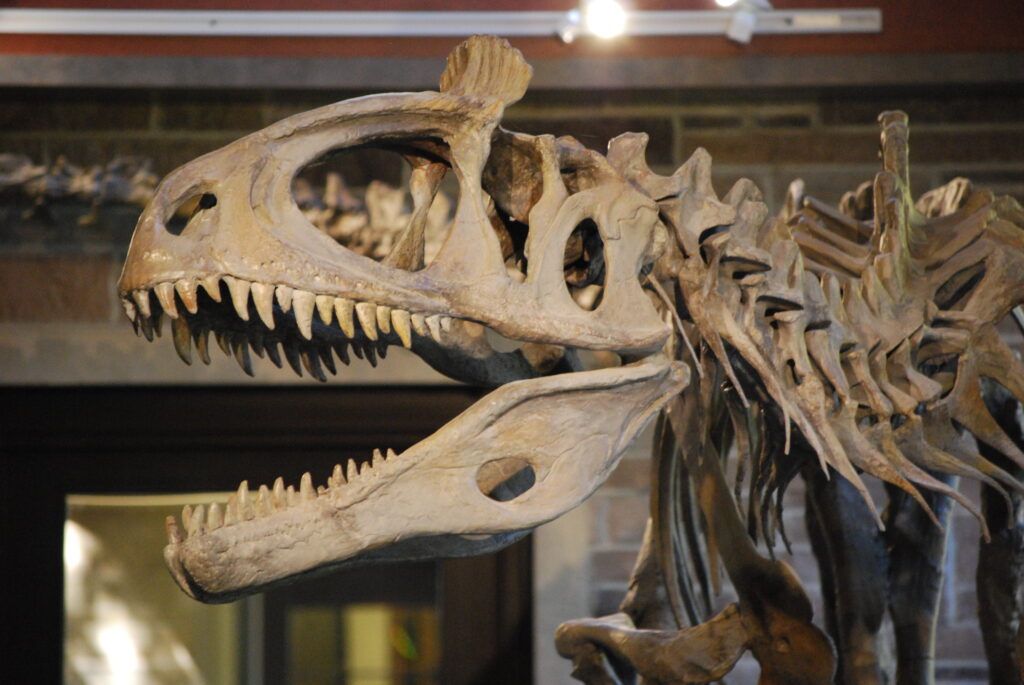
These remarkably preserved specimens have fundamentally altered our understanding of dinosaur biology and appearance. Before such discoveries, paleontologists could only speculate about skin textures, coloration, and the presence of features like feathers based on skeletal evidence and comparisons with modern relatives. Now, direct evidence shows that many dinosaurs were feathered, some were vibrantly colored or iridescent, and others had complex skin patterns. Internal organ preservation reveals details about dinosaur digestive systems, muscle arrangements, and even last meals, providing concrete data on diet and physiology. The discovery of original proteins and possible DNA fragments in some exceptionally preserved specimens, though controversial, suggests the possibility of recovering biochemical information from the distant past. These fossils have transformed dinosaurs in the public imagination from slow, scaly reptiles to active, complex animals with diverse coverings and appearances, much closer to birds than previously recognized.
Future Prospects: What Might We Discover Next?
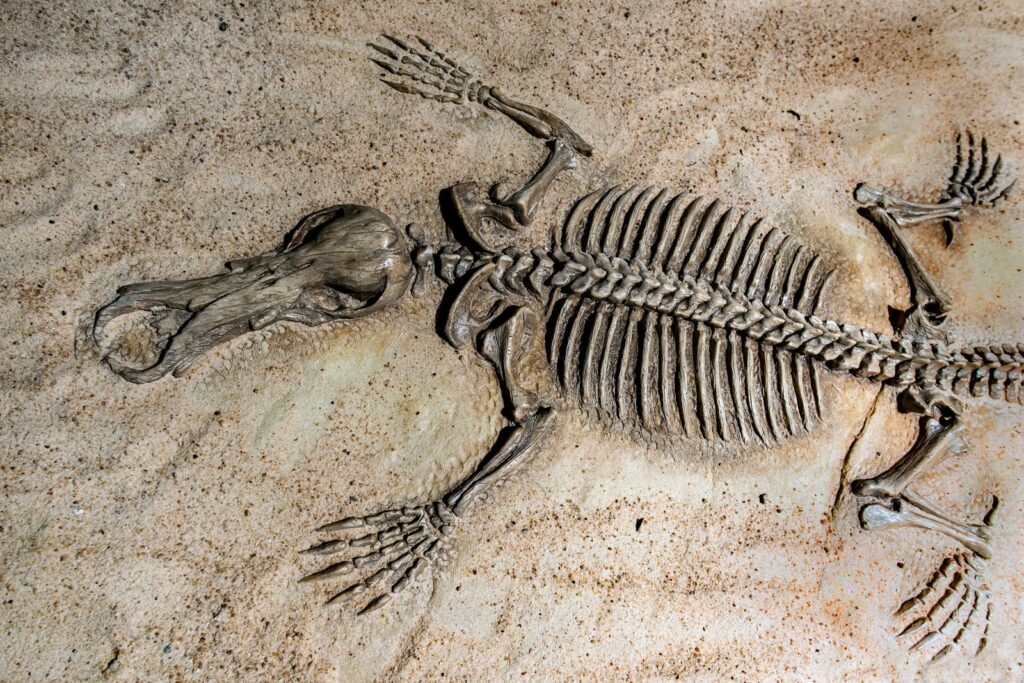
The continuing discovery of exceptionally preserved dinosaur fossils suggests that even more remarkable specimens await discovery in the fossil record. New excavations in promising localities like the Jehol Biota in China, the Hell Creek Formation in the United States, and various sites in Mongolia and Argentina may yield additional specimens with preserved soft tissues. Advances in analytical techniques might allow scientists to extract more information from already-discovered specimens, potentially revealing details about internal organs, blood vessels, or nerve tissues not currently visible. The emerging field of molecular paleontology continues to refine methods for identifying and analyzing ancient proteins and possible DNA fragments preserved in some fossils. Climate change ironically aids discovery in some regions, as melting permafrost in the Arctic and Antarctic regions exposes new fossil-bearing formations previously inaccessible. These future discoveries promise to further refine our understanding of dinosaur appearance, behavior, and biology in ways we can only begin to imagine.
Conclusion: Windows into a Lost World

These eight exceptionally preserved dinosaur fossils represent far more than scientific curiosities—they are time capsules that provide unprecedented glimpses into a world lost 66 million years ago. Each specimen has forced paleontologists to reconsider long-held assumptions about dinosaur appearance, physiology, and behavior. From the armored nodosaur with its remarkably preserved skin to feathered dromaeosaurs that blur the line between dinosaur and bird, these fossils bring ancient creatures to life with an immediacy that skeletal remains alone cannot achieve. As technology advances and new specimens emerge from the rock, our picture of dinosaurs continues to evolve, becoming ever more detailed and accurate. These rare glimpses of soft tissues, colors, and structures remind us that dinosaurs were not movie monsters but real animals that lived, breathed, and thrived on Earth for over 150 million years—a success story that makes our own species’ time on Earth seem brief by comparison.


